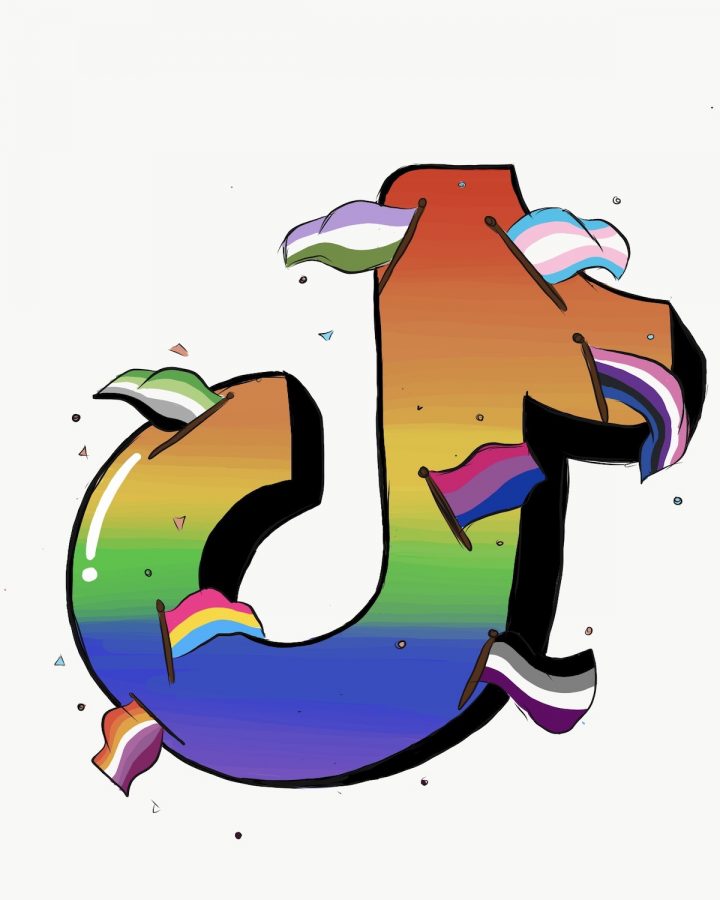“The gay side” of TikTok unites LGBTQ youth
October 2, 2020
“So, are you on ‘Gay TikTok’ or ‘Straight TikTok?’”
If you are an avid TikTok user like me, someone has probably asked you this question at some point. After all, these “sides” of TikTok (a result of TikTok’s algorithm recommending targeted videos to people based on their unique interests) are vastly different. On one side, you’ll find famous influencers and viral dance trends, and on the other, you’ll find lesbians making earrings out of rubber frogs and femboys (feminine-presenting men) showing off their new floral skirts.
Personally, I love the gay side of TikTok, as it connects young users to diverse and authentic queer creators, providing a platform to identities that are rarely represented in mainstream media.
On TikTok, young queer people can find content by creators who are just like them. As users interact with videos by liking or commenting on them, TikTok takes note of their interests and recommends videos accordingly. For queer people, this often sends us to Gay TikTok, also known as “Alt TikTok.”
This alternative section of the app is where the queer community shines. Gay TikTok is home to a large variety of queer creators—I see far more transgender, non-binary and queer people of color on TikTok than I ever have in mainstream media.
I am often disheartened by how movies and television, such as Love, Simon or Andi Mack, reflect the LGBTQ community, favoring stories centered on white, cisgender, gay men rather than representing the true diversity of the community.
While I believe this representation is important, it makes me wonder when children’s media will start to represent identities that are not as readily accepted in our society. Unfortunately, I think it might be a while before children’s media tells the stories of these smaller subsets of the community. While we wait, I think we should celebrate the powerful queer content that TikTok already has to offer.
As the content on Gay TikTok is often connected to the creator’s sexual or gender identity, most of the videos are rather lighthearted and silly, creating a positive and inclusive culture within a community that does not always have the freedom to be themselves. This playful nature is imperative to LGBTQ culture, as this tone allows people to comment on more serious topics in an approachable way.
For example, I’ve seen many videos of people openly questioning their gender or sexual identity in humorous ways. These are videos I wish I could have seen years ago when I was questioning my sexuality—a comforting social media community could have shown me that I didn’t need to take myself so seriously.
Thankfully, kids younger than me now have the opportunity to see videos of drag queens teaching queer history and older members of the LGBTQ community advising viewers who have just come out. They have examples of healthy queer relationships, and most importantly, they have access to a deeply supportive community.
Gay TikTok is the cultural hub of the LGBTQ community’s youngest generation. Its simple humor and needed diversity are unparalleled by any mainstream media attempt at queer representation.
So to all my readers spending hours learning Straight TikTok dance crazes, I formally invite you to venture to the gay side of TikTok. I promise, you will not be disappointed.



